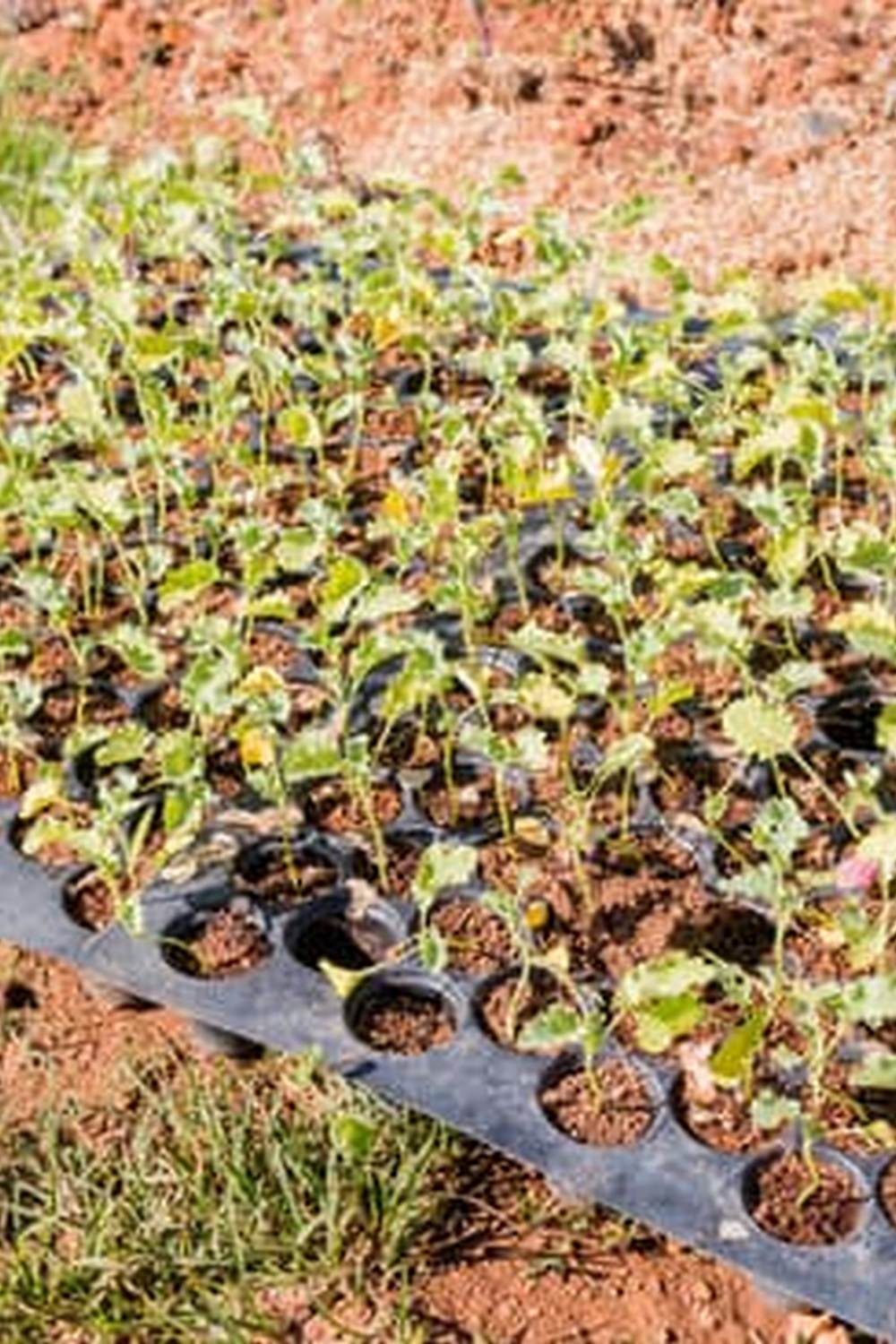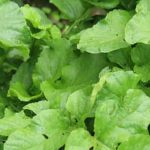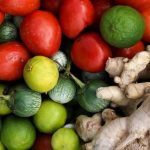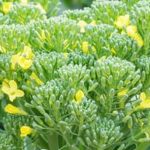Are you interested in starting your own vegetable garden in the Pacific Northwest? Look no further. This article will provide you with a comprehensive guide to vegetable gardening in this unique region. Whether you are a seasoned gardener or just starting out, the information provided in this article, including a downloadable vegetable gardening in the Pacific Northwest PDF, will help you have success with your garden.
The Pacific Northwest presents its own set of challenges and opportunities when it comes to vegetable gardening. Understanding the climate and growing conditions is essential for selecting the right vegetables and knowing how to care for them. From preparing and maintaining soil to managing pests and diseases, this article covers everything you need to know for a successful vegetable garden in this region.
In addition to practical tips and advice, we also provide inspiring success stories from other vegetable gardens in the Pacific Northwest. Whether you are looking to create a sustainable and organic garden or simply want to learn more about preserving your harvest, this article has got you covered. So, grab your gardening tools and get ready to grow some delicious and nutritious vegetables right in your own backyard.
Understanding the Climate and Growing Conditions in the Pacific Northwest
The Pacific Northwest is known for its mild, maritime climate, making it an ideal region for vegetable gardening. The temperate weather, with its cool summers and mild winters, provides a long growing season for a wide variety of vegetables. Understanding the climate and growing conditions in the Pacific Northwest is crucial for successful vegetable gardening.
The region’s abundant rainfall and moderate temperatures create an optimal environment for growing many types of vegetables. However, it’s important to be aware of the specific microclimates within the Pacific Northwest, as they can vary significantly from coastal areas to inland regions. Factors such as elevation, proximity to bodies of water, and topography can all impact local growing conditions.
To make the most of the unique climate in the Pacific Northwest, gardeners should focus on selecting vegetables that thrive in cool, moist conditions. Some popular choices for this region include leafy greens like kale and lettuce, root vegetables such as carrots and beets, as well as brassicas like broccoli and cabbage. Additionally, the long daylight hours during the summer months provide an opportunity to grow heat-loving crops like tomatoes and peppers.
When planning a vegetable garden in the Pacific Northwest, it is essential to take into account the maritime climate’s characteristics. Here are some key considerations for understanding the climate and growing conditions in this region:
- Cool summers with limited heat stress on plants
- Moderate winter temperatures that allow for extended harvests
- Abundant rainfall throughout much of the year
- Potential for microclimate variations based on location
By understanding these unique growing conditions in the Pacific Northwest, gardeners can make informed decisions about which vegetables to grow and how to best care for their plants throughout the year.
Selecting the Right Vegetables for the Pacific Northwest
When it comes to vegetable gardening in the Pacific Northwest, it is essential to choose the right vegetables that are well-suited for the region’s unique climate and growing conditions. The cool, maritime climate of the Pacific Northwest presents some challenges, but with careful selection, gardeners can still enjoy a bountiful harvest.
Some of the best vegetables to consider for the Pacific Northwest include cool-season crops such as kale, lettuce, spinach, and peas. These vegetables thrive in the mild temperatures of the region and can even withstand occasional frosts. Root vegetables like carrots, beets, and radishes also perform well in this climate.
It’s important to consider not only the climate but also the specific microclimates within your garden. Coastal areas may have different growing conditions than inland or mountainous regions. Consulting with local gardening experts or experienced gardeners in your area can provide valuable insights into which vegetables will thrive in your particular location.
To further assist you in selecting the right vegetables for your Pacific Northwest garden, we have compiled a list of recommended varieties for different seasons and microclimates. This resource can be found in the “Vegetable Gardening in the Pacific Northwest PDF,” which provides comprehensive information and helpful tips for successful vegetable gardening in this region.
| Recommended Vegetables | Suitable Seasons |
|---|---|
| Kale | Fall/Winter/Spring |
| Lettuce | Spring/Fall |
| Spinach | Spring/Fall |
| Peas | Spring/Fall |
Tips for Preparing and Maintaining Soil in the Pacific Northwest
When it comes to vegetable gardening in the Pacific Northwest, one of the most crucial factors to consider is the soil. The region’s unique climate and growing conditions require specific attention to soil preparation and maintenance in order to ensure successful yields. Here are some essential tips for preparing and maintaining soil in the Pacific Northwest:
- Know Your Soil: Before planting, it’s important to test your soil to understand its pH levels, nutrient content, and composition. This information will help you determine what amendments or fertilizers may be necessary to optimize soil health.
- Amend with Organic Matter: The heavy clay soils common in the Pacific Northwest can benefit from the addition of organic matter such as compost, aged manure, or leaf mold. These materials improve drainage, aeration, and nutrient retention in the soil.
- Mulch for Moisture Retention: Given the region’s rainy winters and dry summers, adding a layer of mulch around your plants can help regulate soil moisture levels. Organic mulches like straw or wood chips also break down over time, enriching the soil as they decompose.
In addition to these tips:
- Practice Crop Rotation: To prevent depletion of nutrients and minimize disease buildup in the soil, rotate your vegetable crops annually. Designate different areas of your garden for specific plant families each year.
- Avoid Compaction: Heavy rainfall can lead to compacted soil, which hinders root growth and water infiltration. Try not to work wet soil and use raised beds or wide pathways to reduce compaction in your garden.
By following these guidelines for preparing and maintaining soil in the Pacific Northwest, you can create an optimal growing environment for your vegetable garden. With proper care and attention to your soil, you’ll be on your way to bountiful harvests of fresh produce.
For more detailed information on this topic, download the “Vegetable Gardening in the Pacific Northwest PDF” guide for comprehensive insights into sustainable gardening practices tailored specifically for this region.
Important Seasonal Considerations and Planting Calendar
When it comes to vegetable gardening in the Pacific Northwest, understanding the seasonal considerations and having a planting calendar is crucial for a successful harvest. The Pacific Northwest has a unique climate that can be quite challenging for gardeners, but with the right knowledge and planning, it is possible to grow a wide variety of vegetables throughout the year.
In the Pacific Northwest, it’s important to pay close attention to the seasons and their unique characteristics. The region experiences mild, wet winters and dry summers, making it essential to select vegetables that are well-suited to these conditions.
Some cool-season crops that thrive in the Pacific Northwest include broccoli, Brussels sprouts, carrots, kale, lettuce, and peas. On the other hand, warm-season crops like tomatoes, peppers, squash, and cucumbers require adequate sunlight and warmth during the summer months.
Having a planting calendar specific to the Pacific Northwest can help gardeners stay organized and maximize their growing season. This calendar should outline when to start seeds indoors, when to transplant seedlings outdoors, and when to directly sow seeds into the garden. By following a planting calendar tailored to the region’s climate, gardeners can ensure that they are making the most of each season and optimizing their harvests.
As a bonus tip for vegetable gardening in the Pacific Northwest PDF guide readers are also advised consider companion planting – grouping plants together that complement each other – as well as succession planting – sowing new crops at regular intervals – in order to maximize yields throughout the growing season.
| Vegetable | Planting Season |
|---|---|
| Broccoli | Fall (transplant) or Early Spring (direct sow) |
| Lettuce | Early Spring (direct sow) or Late Summer (transplant) |
| Cucumbers | Mid-Spring (transplant) or Late Spring (direct sow) |
Pest and Disease Management in Vegetable Gardening in the Pacific Northwest
When it comes to vegetable gardening in the Pacific Northwest, it’s important to consider the various pests and diseases that can affect your plants. This region is known for its damp and mild climate, which can create ideal conditions for certain pests and diseases to thrive. However, with the right knowledge and practices, you can effectively manage these challenges and ensure a successful harvest.
Common Pests in the Pacific Northwest
One of the most common pests to watch out for in the Pacific Northwest is aphids. These small insects can quickly multiply and infest your plants, causing damage to their leaves and stems. Slugs are another nuisance in this region, especially during the wetter months. Additionally, caterpillars, mites, and beetles are also prevalent in Pacific Northwest gardens.
Identifying and Managing Diseases
In terms of diseases, fungal infections like powdery mildew and downy mildew can be a concern due to the region’s high humidity levels. Root rot is also a potential issue in the Pacific Northwest’s moist soil conditions. It’s important to monitor your plants regularly for any signs of disease, such as yellowing or spotted leaves, wilting, or stunted growth. Proper plant spacing, good air circulation, and regular inspection can help prevent the spread of disease.
Natural Pest Control Methods
To manage pests and diseases organically, consider implementing natural pest control methods such as companion planting, introducing beneficial insects like ladybugs or lacewings into your garden, using physical barriers like row covers or netting, and practicing crop rotation. Additionally, making use of homemade remedies like garlic or neem oil sprays can help deter pests without resorting to chemical solutions.
By being proactive in identifying and managing pest and disease issues in your vegetable garden, you can ultimately promote a healthier growing environment for your plants while minimizing potential damage.
Harvesting and Preserving Tips for Pacific Northwest Gardeners
When it comes to vegetable gardening in the Pacific Northwest, knowing how to harvest and preserve your crops is essential for maximizing the yield from your garden. The region’s unique climate and growing conditions present both challenges and opportunities when it comes to harvesting and preserving vegetables.
The Pacific Northwest is known for its long growing season, which allows for a wide variety of vegetables to be grown. However, the damp climate can lead to an abundance of certain pests and diseases, making timely harvesting crucial for preventing crop loss. To make the most of the harvest, it is important to regularly check your plants for ripe produce and harvest them at the peak of perfection.
Preserving the bounty from your vegetable garden is another key aspect of successful gardening in the Pacific Northwest. Canning, freezing, and drying are popular methods for preserving vegetables in this region. It’s important to have a good understanding of proper food preservation techniques to ensure that your harvest lasts throughout the year. Additionally, taking advantage of seasonal abundance by preserving excess produce can help reduce food waste and provide nutritious options during the winter months.
For more detailed information on harvesting and preserving tips specific to vegetable gardening in the Pacific Northwest, refer to reputable resources such as the Vegetable Gardening in the Pacific Northwest PDF. This comprehensive guide provides valuable insights into best practices for maximizing your garden’s yield and enjoying homegrown produce year-round.
Resources and Further Reading for Vegetable Gardening in the Pacific Northwest PDF
The Pacific Northwest is a unique region with its own set of challenges and advantages when it comes to vegetable gardening. Whether you are a beginner or an experienced gardener, there are numerous resources available to help you succeed in growing your own vegetables in this beautiful part of the country.
Local Gardening Associations and Clubs
One of the best ways to learn about vegetable gardening in the Pacific Northwest is to connect with local gardening associations and clubs. These organizations often provide valuable resources such as workshops, seminars, and garden tours specifically tailored to the unique climate and conditions of the region. They can also be a great source of advice, support, and inspiration from fellow gardeners who have experience with vegetable gardening in the Pacific Northwest.
University Extension Programs
Many universities in the Pacific Northwest offer extension programs that provide research-based information on vegetable gardening. These programs often have downloadable PDF guides and fact sheets that cover topics such as soil management, pest control, and recommended vegetable varieties for the region. They may also offer workshops, classes, and online webinars for gardeners looking to expand their knowledge and skills.
Online Resources and Publications
For those who prefer to access information digitally, there are plenty of online resources available for vegetable gardening in the Pacific Northwest. Websites of local nurseries, botanical gardens, and agricultural centers often provide informative articles, videos, and downloadable publications on topics ranging from soil preparation to preserving techniques. Additionally, there are numerous PDF guides specifically created for vegetable gardening in the Pacific Northwest that cover everything from seed selection to harvesting schedules.
By taking advantage of these valuable resources and further reading materials, you can equip yourself with the knowledge and tools needed to create a successful vegetable garden in the Pacific Northwest. Whether you prefer hands-on workshops or digital downloads, there are plenty of options available to support your gardening journey in this unique region.
Creating a Sustainable and Organic Vegetable Garden in the Pacific Northwest
One important aspect of creating a sustainable and organic vegetable garden in the Pacific Northwest is to focus on soil health. The region’s acidic soils can benefit from regular applications of organic matter such as compost, manure, and cover crops. Additionally, practicing no-till or low-till gardening techniques can help improve soil structure, enhance water retention, and reduce erosion.
Choosing the right plants for your vegetable garden is another key component of sustainable gardening in the Pacific Northwest. Opting for native or regionally-adapted vegetable varieties can help conserve water, reduce the need for chemical inputs, and support local biodiversity. Furthermore, using companion planting techniques and integrating diverse crops can promote natural pest control and improve overall garden resilience.
In addition to soil health and plant selection, incorporating water-wise irrigation methods such as drip irrigation or soaker hoses can help conserve water in your vegetable garden. This is particularly important in the Pacific Northwest where water resources may be limited during certain seasons. By implementing these sustainable gardening practices, you can create an environmentally-friendly and productive vegetable garden that thrives in the unique climate of the Pacific Northwest.
Success Stories
As we wrap up this comprehensive guide to vegetable gardening in the Pacific Northwest, it’s important to draw inspiration from success stories of other gardeners in the region. These inspiring tales demonstrate that with careful planning, dedication, and a deep understanding of the unique challenges and opportunities presented by the Pacific Northwest climate, bountiful and beautiful vegetable gardens can thrive in this region.
One such success story comes from the Smith family in Seattle, who transformed their small urban backyard into a lush vegetable paradise. By implementing raised beds, vertical gardening techniques, and selecting vegetables that are well-suited to the cool and moist climate of the Pacific Northwest, they have been able to consistently harvest an abundance of fresh produce throughout the growing season.
Their dedication to sustainable and organic practices has not only benefited their family’s health but also contributed to a stronger sense of community through sharing their surplus with neighbors.
Another remarkable success story comes from the Stevens County community garden project, where a group of passionate individuals came together to cultivate an expansive plot of land with the goal of providing fresh produce to local food banks. Through collaboration, shared knowledge, and a commitment to environmental stewardship, they have not only achieved their goal but have also fostered a sense of community empowerment and resilience in the face of food insecurity.
Their story serves as a testament to how vegetable gardening in the Pacific Northwest can be a powerful force for positive change.
These success stories are just a glimpse of what is possible when embarking on your own vegetable gardening journey in the Pacific Northwest. By utilizing resources such as the Vegetable Gardening in the Pacific Northwest PDF and tapping into the wealth of knowledge and experience within the local gardening community, you too can create your own success story.
Whether it’s in an urban backyard or a communal garden plot, with passion and perseverance, your vegetable garden can flourish in this rich and diverse region.
Frequently Asked Questions
What Vegetables Are Easy to Grow in the Pacific Northwest?
The Pacific Northwest has a mild, maritime climate that is great for growing vegetables like kale, lettuce, carrots, and potatoes. These vegetables thrive in the region’s cool temperatures and moist conditions, making them easy to grow for both beginners and experienced gardeners.
When Should I Start My Garden in PNW?
In the PNW, the best time to start your garden depends on the specific location within the region. Generally, you can start planting cool-season crops like peas and onions as early as late February or early March.
For warm-season crops like tomatoes and peppers, it’s best to wait until late spring when the risk of frost has passed.
What Produce Grows Well in Washington State?
Washington State is known for its diverse agricultural products due to its varied climate and soil types. Some of the produce that grows well in Washington include apples, cherries, pears, potatoes, sweet corn, and a wide variety of berries such as blueberries and raspberries. The state’s fertile land and temperate climate create ideal conditions for these crops to thrive.

If you’re looking to get into vegetable gardening, or are just looking for some tips on how to make your current garden better, then you’ve come to the right place! My name is Ethel and I have been gardening for years. In this blog, I’m going to share with you some of my best tips on how to create a successful vegetable garden.





